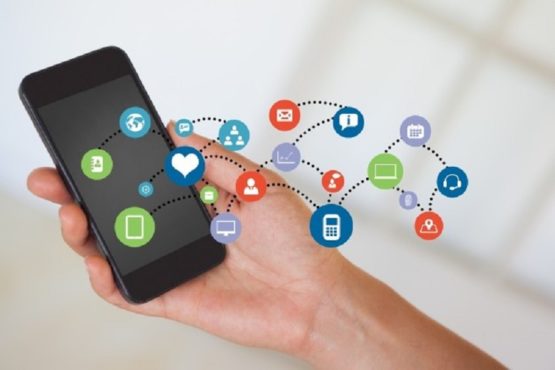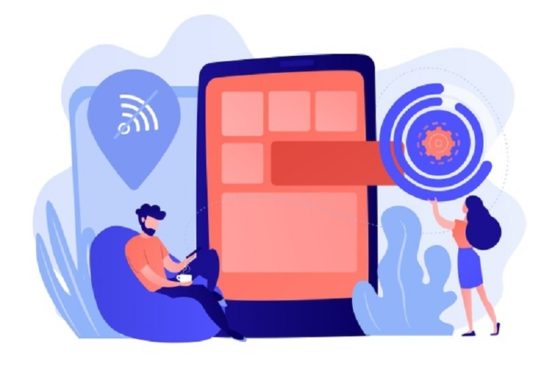A mobile app project begins with deciding on the look and feel of the product. After all, what matters, in the end, is building an engaging relationship between the user and the app. `
Mobile Apps are Different from Desktop Apps
Just like the user experience of a smartphone is different from a desktop computer. Apart from the difference between the common aspects like the screen size, connectivity, bandwidth speed; a smartphone is more of a personal device.
It is directly addressable and comes with powerful sensors that are capable of detecting movement, location, orientation, acceleration, environmental conditions and others.
Keeping in mind all these factors, it is not surprising that a mobile app design should be different from that of a desktop app design. Apart from following certain mobile app design strategies, there are some basic principles that should be on your must-do list when getting down working on a new mobile app development project. These can make your mobile app development work a complete success.
Important Points to Remember When Working on a Mobile App Development Project
1 – Have you thought of a goal yet?
A goal is the first thing that should be on top of your list since that is what should be guiding you all the way through.
Should your mobile app be unique? Charming? Considerate? You must clearly define what your mission is and how is your mobile app going to address the problem that your target audiences want a solution for. When you know clearly what your goal is, it’s going to make your mobile app development work better and faster.
2 – What should be the context of your mobile app
Your mobile app development project should be based on three major mobile contexts – Busy, Bored, and Lost.
Busy – Now most of the times, when people think of smartphones, they draw the image of a busy professional who is racing across an airport to catch his or her flight. While this might not always be the case, however, for an app developer, this is something that needs to be kept in mind.
So, how should the context help an app design unfold? It’s critical to consider the ability to accomplish micro-tasks even in the midst of a hectic environment. In such a context, it’s also important to maintain bold designs and huge targets that are easily accessible. For example like email, Triplt, banking, and calendar.
Bored – Apart from busy, let’s not forget that people who feel bored and a mobile app is the first thing that they are going to interact with on a smartphone. When you start thinking about your mobile app design from this context, then slowly you realize that the UI pattern should be more inclined towards a longer usage session.
Lost – This is the category meant for users who tend to fall into familiar or unfamiliar surroundings but seem to be interested in something else. In such a case, the contexts that an app developer should focus on when designing an app are battery life and sketchy connectivity. You should also think about providing offline support facility just in case if you are including geolocation or battery hogs.
3 – Let’s Start with Conceptualization and Sketching
Sketching down your conceptualization helps you to lay the foundation of the design UI of your mobile application. It not just helps you but your entire app development team to decide on the layout of your app design and the main features. And guess what? You can also utilize the sketch as a part of reference as the project moves ahead to the next stage.
4 – Do Not Forget about the Global Guidelines
It’s true that different mobile apps have different designs, approaches, and techniques; but when it comes to global guidelines, there are some things that need to be followed by everyone. Here are the most important ones that you would like to know –
Responsiveness – Being responsive does not just mean fitting the screen size. It’s also about responding instantly when users interact with your application. Certainly, there are certain functions that require more time to operate and it is in such cases that you can use interactive designs to let users know that you are working on it and would be back right away.
Polish – Designing a mobile app can sometimes go wrong and it is during such times that you will realize that the design UI can also turn out to be a pretty mess. The body of your mobile app might be looking great and everything is functioning smoothly but then, even the slightest rattle can give your target audience a bad user experience.
Content – Many might not be aware of this, but content plays a great part of the user interface; even if it has to be a mobile application. The nature and the style of your content should be crisp and straight-forward. Remember – no rambling words. This makes it easier for users to interact with a mobile application better.
5 – Choosing a Navigation Model
Mobile apps can have different types of navigation models. You can pick any one of them that fits your mobile app design. However, make sure that the choice that you make should make sense with the functionality of your mobile app. If you are a first timer and want to learn about navigation models, there here is something that you would be happy to know: the three basic navigational models for mobile apps –
The Tab Bar Navigational Model – Contains three to six distinct content areas
The Single Screen Navigational Model – This one is made truly for all utility apps
The Drill Down Navigational Model – Presentation of the content in a hierarchical manner
6 – Creating the Wireframe
A wireframe is actually prototyping or creating a mockup of your mobile app. There are many wireframe software that you can or are using for this.
Those who are not aware how a wireframe works, it’s important to understand that it allows an app developer to review the overall design and functionality of a mobile app. And while you are working with your wireframe, maybe, you can even start creating a storyboard for your project. This will act as a roadmap that draws the connection as to how a user can navigate engagingly throughout the app.
Once you are done with your wireframe, draw a sketch of the APIs, servers, and data diagrams. This will be useful as a self-explanatory diagram that your development team would be useful as a reference.
7 – Keep the Communication Flow
This is something that is every important even if many of you don’t always pay attention to this. However, for an app developer, one cannot afford to lose this. For example – you must make sure that your app provides instant feedback for every communication. Like a button being highlighted when tapped or a vibration effect.
Another example of keeping the communication flow is the use of modal confirmation dialog box. If the user takes an action then a box pops out asking whether the user is sure about the action.
The above two examples make it clear – a great app design needs to keep the communication flow engaging.
8 – Always be Testing
Review your final project before preparing for its launch. If it’s good then you can be confident about its launch anyway. On the contrary, if it’s not, then you can quickly fix up the problems and launch it.
Designing a mobile app is nothing like a website design. There are too many factors that need to be kept in mind when you are getting down with a project. Make sure that you are following them, for they will make your work faster, better and cleaner.
Images Courtesy: pixabay.com




